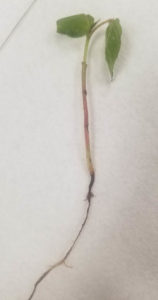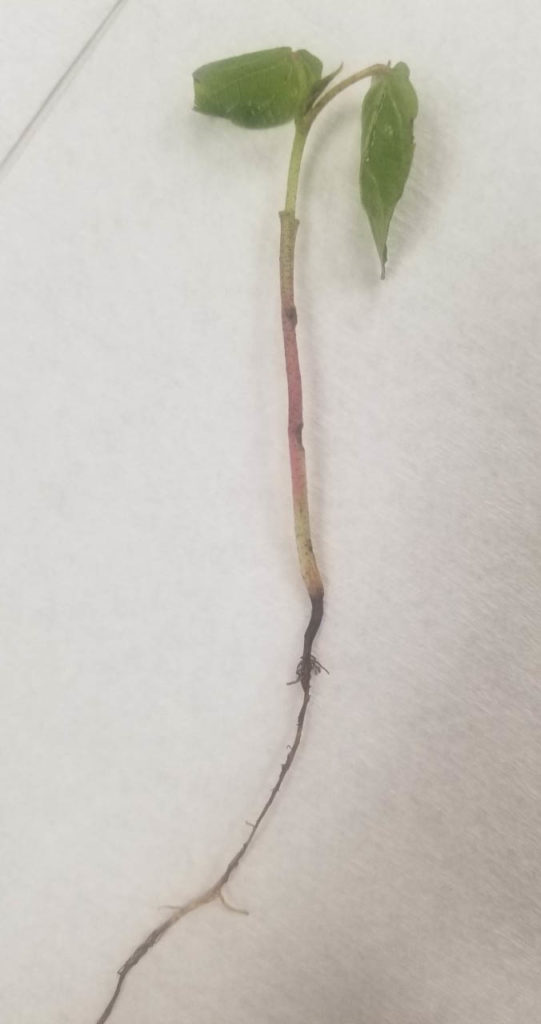Caused by: Thielaviopsis basicola Diagnostic Note: Early scouting is crucial because initial infection of the cortical root tissue by T. basicola can occur 10-14 days after planting. Whereas, symptoms of black root rot have been observed in seedlings as early as 3 weeks after planting. Levels of disease incidence and severity increase in fields that contain Root-Knot nematode (Meloidogyne incognita) and Reniform nematodes (Rotylenchulus reiformis). Therefore, soil sampling for nematodes prior to planting season should highly be considered. Yield Loss Estimate: Rhizoctonia solani is 1 of 4 cotton seedling pathogens known to cause cotton yield losses in Tennessee. Often, there is not just one disease that is causing the yield loss. Therefore, when totaling yield losses due to cotton seedling disease, all 4 pathogens are considered. In 2018 alone, it is estimated that 162,000 bales of cotton were lost to seedling disease in the United States. This is the equivalence of 48.6 million dollars lost. Table 1 demonstrates where seedling disease has ranked over the past 5 years for disease loss estimates in cotton across the U.S. In Tennessee, cotton seedling diseases can be great cause of concern. Together, these diseases compose the biggest disease problem Tennessee cotton producers encounter during a growing season. Since 1995, seedling diseases have caused from 3%-22% within the state. Yield losses were typically higher in years with cool and wet conditions present early on in the season. Symptoms: Characteristic symptoms of black root rot include initial delay in seedling growth, as well as, darkening of the tap root/ lateral roots. The darkening of the roots is the visual representation of the outer root cortex decaying. In severe cases, all of the lateral roots may be lost.
Symptoms: Characteristic symptoms of black root rot include initial delay in seedling growth, as well as, darkening of the tap root/ lateral roots. The darkening of the roots is the visual representation of the outer root cortex decaying. In severe cases, all of the lateral roots may be lost.
Cultural Practices: Crop rotation to a non-host such as cereal crops, or canola is highly recommended to reduce the severity potential of black root rot. When fields are planted with cotton for multiple growing seasons in a row, spores of T. basicola can build up in the soil. Proper sanitization of field equipment will also reduce the spread of spores that can adhere to vehicles when moving from field to field. T. basicola germinates in cool and wet soil conditions. When making planting diseases try to avoid planting if the weather is cool and the precipitation is high. When possible, planting should be delayed until soil temperatures reach at least 60.8°F. Seed Treatments: All varieties of cotton are susceptible to black root rot. Therefore, seed treatments are the first line of defense when combating seedling diseases. When buying seed look for seed that has a base fungicide treatment applied. For black root rot, look for a seed treatment that contains Myclobutanil.
